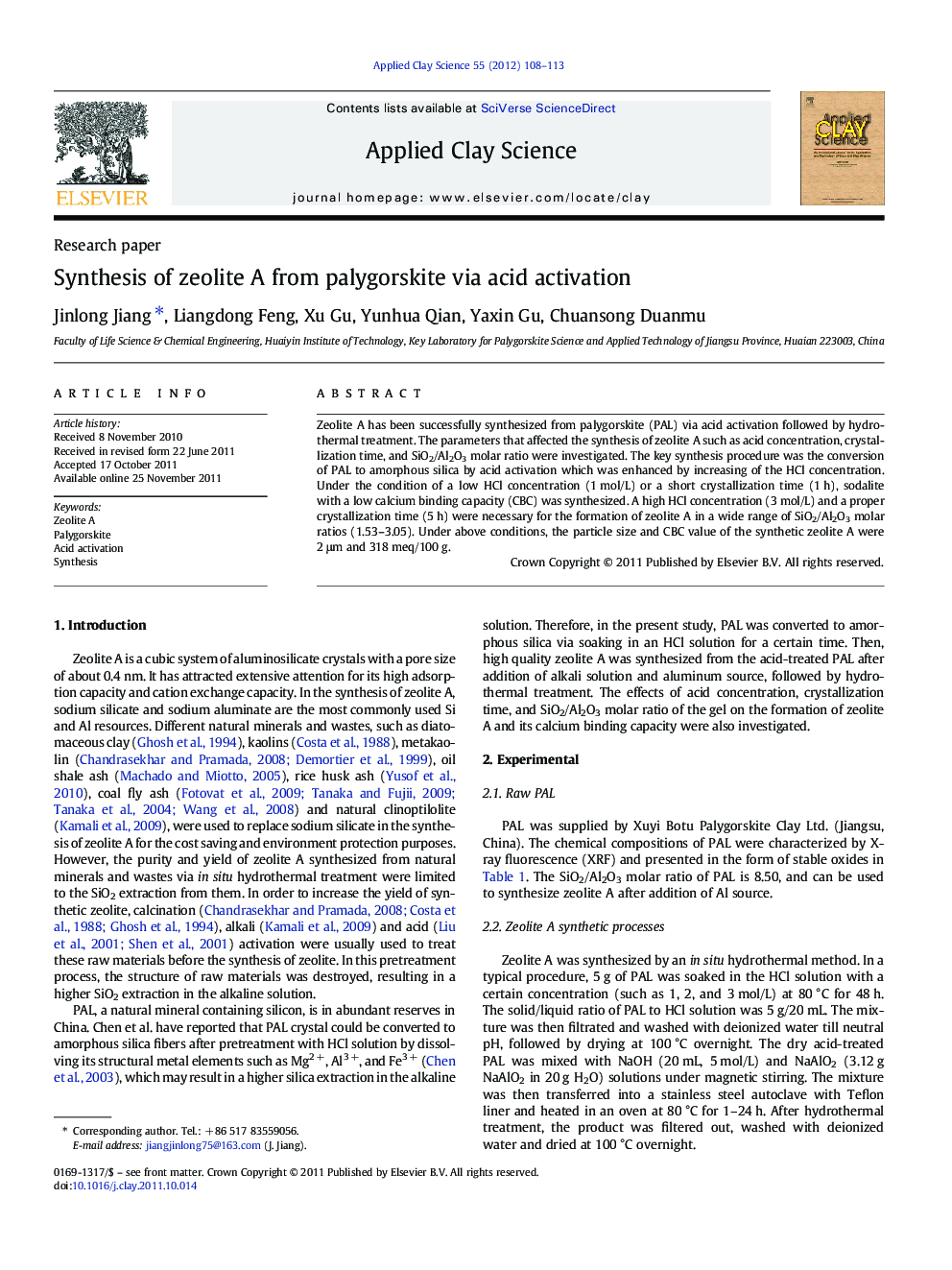| Article ID | Journal | Published Year | Pages | File Type |
|---|---|---|---|---|
| 1695346 | Applied Clay Science | 2012 | 6 Pages |
Zeolite A has been successfully synthesized from palygorskite (PAL) via acid activation followed by hydrothermal treatment. The parameters that affected the synthesis of zeolite A such as acid concentration, crystallization time, and SiO2/Al2O3 molar ratio were investigated. The key synthesis procedure was the conversion of PAL to amorphous silica by acid activation which was enhanced by increasing of the HCl concentration. Under the condition of a low HCl concentration (1 mol/L) or a short crystallization time (1 h), sodalite with a low calcium binding capacity (CBC) was synthesized. A high HCl concentration (3 mol/L) and a proper crystallization time (5 h) were necessary for the formation of zeolite A in a wide range of SiO2/Al2O3 molar ratios (1.53–3.05). Under above conditions, the particle size and CBC value of the synthetic zeolite A were 2 μm and 318 meq/100 g.
► Palygorskite was converted into amorphous silica in a hot HCl solution. ► Zeolite A with high crystallinity was synthesized from acid-treated palygorskite. ► Zeolite A was obtained at a wide range of SiO2/Al2O3 molar ratios. ► The synthetic zeolites exhibited excellent calcium binding capacity.
